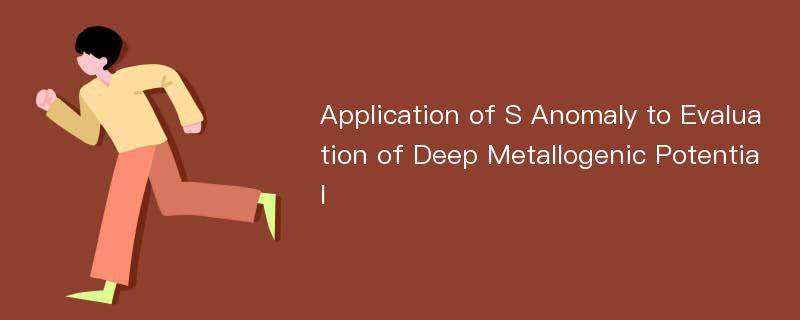
论文摘要
The element S, a typical mineralizing agent, is indispensable for ore-forming materials of most non-ferrous metal deposits, and S anomaly thus plays an irreplaceable role in evaluation of metallogenic prospects. This paper explores the application of S anomaly in the Tongshan copper deposit of Heilongjiang Province. Samples are selected from the drill hole ZK611, and overall 56 samples were collected from this hole with a depth of 604 m. Element migration quantity of S, Fe, Cu, Pb, Zn and Ag in the Tongshan area is calculated and listed in Table 1 in the order of lithology. Element migration quantity calculation utilized the Grant’s concentration line equation.ΔCi=(MA/MO)CiA-CiO=(CjO/CjA)CiA-CiO Where, ΔCi-migration quantity of element i; MA –mass of altered rocks; MO –mass of original rocks; CiA –content of element i in altered rocks; CiO –content of element i in original rocks; CjO –inert element j in original rocks; CjA –content of inert element j in altered rocks. Here Al2O3 is selected as inert element, and j in the equation is Al2O3, i representing S, Fe, Cu, Pb, Zn and Ag. The results shows that, in the drillhole ZK611 with copper orebody occurrence of the Tongshan deposit(400-494 m), the influx of mineralizing agent element S averages 7, 160 g/t, 5, 469 g/t for ore-forming element Cu, and 8, 796 g/t for Fe. This corresponds essentially to stoichiometric ratios of element S with Cu and Fe in chalcopyrite. In contrast, below the copper orebodies(494-581 m), the Cu influx is 652 g/t, 5, 359 g/t for Fe, while the S influx reaches up to 18, 575 g/t, which are greatly in disagreement with their stoichiometric ratios. However, there are no other metal sulfide minerals observed with naked eyes except chalcopyrite and pyrite. Rock measurements and element migration quantity of drillhole ZK611(Table 1) indicate that, in the section at depth of 494-581 m, the elements of Pb, Zn and Ag all exhibit significant influx, and the average influx of Pb is 4653 g/t, 18836 g/t for Zn, with a large influx of Ag and Cd. If the element S combines with Pb and Zn in the system to form common Pb and Zn sulfide minerals of galena and sphalerite, on the basis of Pb and Zn influx and the stoichiometric ratios of S with Pb and Zn(based on 1 t altered rocks), about 720 g S is needed to combine with 4653 g Pb, and 9400 g S to combine with 18836 g Zn, plus the influx of Ag and Cd. This S influx is generally in agreement with that of polymetallic metallogenic elements, and is consistent with the overall stoichiometric ratios of S with metal elements in metal sulfide minerals. It is inferred that, there is Pb-Zn-polymetallic mineralization in the section, and its mineralization intensity is much stronger than that of copper mineralization. The result of microscopic identification of petrographic polished sections shows that, there is really Pb-Zn mineralization in the drill hole ZK611 at depth of 494-581 m, and the mineralization is dominated by
论文目录
文章来源
类型: 国际会议
作者: TANG Shixin,MA Shengming
来源: 第九届世界华人地质科学研讨会 2019-06-01
年度: 2019
分类: 基础科学,工程科技Ⅰ辑
专业: 地质学,地质学,矿业工程,矿业工程
单位: Institute of Geophysical and Geochemical Exploration,CAGSKey Laboratory for Geochemical Exploration Technology,MNR
分类号: P618.2;P632
DOI: 10.26914/c.cnkihy.2019.028536
页码: 452
总页数: 1
文件大小: 150k
下载量: 1
